July 4th Scots Book of Days
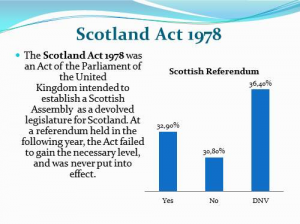 July 4 – Scotland Act 1978
July 4 – Scotland Act 1978
The Scotland Act 1978 was an Act of the Parliament of the United Kingdom intended to establish a Scottish Assembly as a devolved legislature for Scotland. At a referendum held in the following year, the Act failed to gain the necessary level, and was never put into effect.
Volna.org
1516 John Drummond, 1st Lord Drummond (died 1519) with other lords,
Drummond signed the answer of refusal to Henry VIII, who had advised the removal of Albany, to which his seal is affixed, 4 July 1516,
- Drummond of Cargill Stubhall Perth 8th c 2Hamilton2Stewart 2miller2Simmons 2Choate zoe
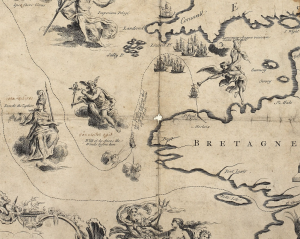 1745 July 4 PRINCE CHARLES EDWARD STUART Joined at Belleisle by the Elisabeth, French ship of war, 64 guns 8 (I. 285).
1745 July 4 PRINCE CHARLES EDWARD STUART Joined at Belleisle by the Elisabeth, French ship of war, 64 guns 8 (I. 285).
1746 July 4. Early morning arrived at Ellagol (Ord. Sur. Elgol), at
the house of John MacKinnon, MacLeod‘s brother in- law, and were hospitably entertained. Here the Prince met the old Chief of 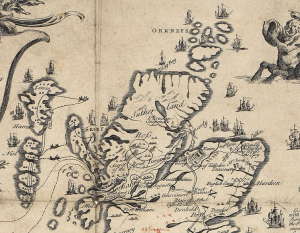 MacKinnon, who took the management of the expedition into his own hands, and at night 4 he and John MacKinnon and four boatmen embarked with the Prince in a boat for the mainland (I. 139, 152, 277; II. 31, 81, 186). Malcolm MacLeod, who left. Publications OF THE SCOTISH HISTORY SOCIETY VOLUME XXIII, Pg 70 (55) April 1897 SUPPLEMENT LYON IN MOURNING PRINCE CHARLES EDWARD STUART ITINERARY AND MAP. Ed.W. B. BLAIKIE, from Narrative of Lord MacLeod, son of the Earl of Cromarty.
MacKinnon, who took the management of the expedition into his own hands, and at night 4 he and John MacKinnon and four boatmen embarked with the Prince in a boat for the mainland (I. 139, 152, 277; II. 31, 81, 186). Malcolm MacLeod, who left. Publications OF THE SCOTISH HISTORY SOCIETY VOLUME XXIII, Pg 70 (55) April 1897 SUPPLEMENT LYON IN MOURNING PRINCE CHARLES EDWARD STUART ITINERARY AND MAP. Ed.W. B. BLAIKIE, from Narrative of Lord MacLeod, son of the Earl of Cromarty.
Hebrides to mainland
1776 Declaration of Independence. Philadelphia. The Scottish Declaration of Arbroath (1320) and the Dutch Act of Abjuration (1581) have also been offered as models for Jefferson’s draft of the Declaration. Of the 56 signatories of the declaration it is estimated that at the least a third (up to 40%) were either Scots by birth or of Scottish descent.
 Tytler’s History of Scotland in the Britannica, summarizes 8 years of war in one page. ‘The colonists resolutely carried on the contest and refused offers made to them by the British government. Their famous general, Washington, obtained successes over the British troops, and German mercenaries hired to assist them, the disaster of general Burgoyne at Saratoga, reduced the ministry to perplexity.’
Tytler’s History of Scotland in the Britannica, summarizes 8 years of war in one page. ‘The colonists resolutely carried on the contest and refused offers made to them by the British government. Their famous general, Washington, obtained successes over the British troops, and German mercenaries hired to assist them, the disaster of general Burgoyne at Saratoga, reduced the ministry to perplexity.’
1823 facsimile of the engrossed copy of the Declaration of Independence.
James Wilson (1742–1798), was one of only six to sign both the United States Declaration of Independence and the United States Constitution. Born in Carskerdo, near St. Andrews, Scotland to William Wilson and Alison Landall. Wilson attended Universities of St Andrews, Edinburgh and Glasgow, Imbued with the ideas of the Scottish Enlightenment he moved to Philadelphia, Pennsylvania, in British America in 1766, carrying valuable letters of introduction.
signer Thomas McKean, per Ronald Hamowy, “Jefferson and the Scottish Enlightenment”,
Jefferson was himself of Scottish descent, tracing his lineage back to King Robert I of Scotland. Jefferson studied law at William and Mary, one of America’s oldest colleges. Jefferson was taught by William Small, a Scottish Professor of mathematics and philosophy. Jefferson wrote later that Small was “as a father” to him and certainly shared with Jefferson the ideas of the Scottish Enlightenment as well as the Scottish ideals of freedom and equality.
John Witherspoon, the sixth president of College of New Jersey (1768–94; Presbyterian founded, later named Princeton University and a signer of the United States Declaration of Independence. John was born at Gifford, parish of Yester, at East Lothian, Scotland, as the eldest child of the Reverend James Alexander Witherspoon and Anne Walker, a descendant of John Welsh of Ayr and John Knox, and Andrew Stewart Lord Ochiltree, one of 24 Lords of the Congregation, both ancestors of actress Reese Witherspoon (flourished 2014). Welsh attended the University of Edinburgh and obtained his Masters of Arts in 1588. Welsh became a minister in Selkirk, and prior to 1596 and leaving Selkirk, Reverend Welsh married Elizabeth, a daughter of John Knox.
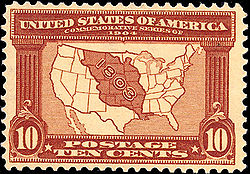 1803 Louisiana Purchase arrives in Washington. As U.S. Minister to France from 1801 to 1804, Robert R Livingston [clan Livingstone] negotiated the Louisiana Purchase. After signing the Louisiana Purchase agreement in 1803, Livingston made this memorable statement: ‘We have lived long but this is the noblest work of our whole lives…The United States take rank this day among the first powers of the world.’
1803 Louisiana Purchase arrives in Washington. As U.S. Minister to France from 1801 to 1804, Robert R Livingston [clan Livingstone] negotiated the Louisiana Purchase. After signing the Louisiana Purchase agreement in 1803, Livingston made this memorable statement: ‘We have lived long but this is the noblest work of our whole lives…The United States take rank this day among the first powers of the world.’
Map of Louisiana Purchase Issue of 1904
1826 50th anniversary of the Declaration of Independence saw the demise (passing) of two signers, Thomas Jefferson and John Adams, both past Presidents of the United States.
1879 The Battle of Ulundi. Zululand in South Africa. 2nd Battalion, 21st Royal Scots Fusiliers, now the Royal Highland Fusiliers. 90th (Perthshire) Regiment: from 1882 the Scottish Rifles (Cameronians), disbanded in 1966.
The newly arrived Major General Henry Crealock, who had served with the 90th Perthshire Regiment in the Crimea, took over Pearson’s old command, now entitled the 1st Division, in the lower Tugela by the coast. The Zulu War was one of the last campaigns fought by the old numbered infantry regiments of the British Army.
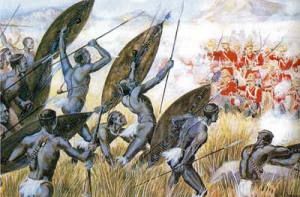 Zulus attacking the 90th Regiment at the Battle of Ulund. In 1882 the Cardwell Reforms brought in the system of two battalion regiments, by combining the single battalion regiments in pairs and assigning formal regional titles. The 90th Perthshire Light Infantry, raised by Sir Thomas Graham in 1794, and one of Britain’s most consistently successful regiments in the Peninsular, Crimean and many smaller colonial wars, to its horror became the 2nd Battalion of the 26th Foot, the Cameronians. The new regiment was given the formal title of the Scottish Rifles. The 2nd Battalion continued to call itself the 90th Light Infantry into the First World War and beyond. It never permitted itself to be referred to as the “Cameronians”, a reference to the raising of the 26th Foot from the extreme Protestant supporters of Richard Cameron in 1689. The 99th , a Scottish regiment from Edinburgh known as the “Moonrakers”, to its surprise found itself the 2nd Battalion of the Wiltshire Regiment, a southern English county regiment. In the 1960s, when the Royal Berkshire and Wiltshire Regiments were amalgamated, the new regiment was called the “Duke of Edinburgh’s”, a title of the old 99th . http://www.britishbattles.com/zulu-war/ulundi.htm
Zulus attacking the 90th Regiment at the Battle of Ulund. In 1882 the Cardwell Reforms brought in the system of two battalion regiments, by combining the single battalion regiments in pairs and assigning formal regional titles. The 90th Perthshire Light Infantry, raised by Sir Thomas Graham in 1794, and one of Britain’s most consistently successful regiments in the Peninsular, Crimean and many smaller colonial wars, to its horror became the 2nd Battalion of the 26th Foot, the Cameronians. The new regiment was given the formal title of the Scottish Rifles. The 2nd Battalion continued to call itself the 90th Light Infantry into the First World War and beyond. It never permitted itself to be referred to as the “Cameronians”, a reference to the raising of the 26th Foot from the extreme Protestant supporters of Richard Cameron in 1689. The 99th , a Scottish regiment from Edinburgh known as the “Moonrakers”, to its surprise found itself the 2nd Battalion of the Wiltshire Regiment, a southern English county regiment. In the 1960s, when the Royal Berkshire and Wiltshire Regiments were amalgamated, the new regiment was called the “Duke of Edinburgh’s”, a title of the old 99th . http://www.britishbattles.com/zulu-war/ulundi.htm
1899 saw the birth of Roy Henderson, the Scottish operatic baritone. Henderson sang the role of Count Almaviva in Mozart’s ‘The Marriage of Figaro’ at the inauguration of Glyndebourne Festival Opera on 28 May 1934. www.bbc.co.uk/scotland/history/onthisday/july/4
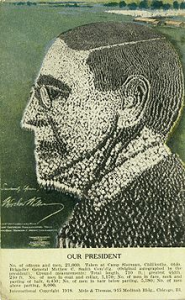 1913 – President Woodrow Wilson addresses American Civil War veterans at the Great Reunion of 1913 (50th anniversary of the Battle of Gettysburg). Wilson’s mother was the daughter of Rev. Dr. Thomas Woodrow, born in Paisley, Scotland and Marion Williamson from Glasgow.
1913 – President Woodrow Wilson addresses American Civil War veterans at the Great Reunion of 1913 (50th anniversary of the Battle of Gettysburg). Wilson’s mother was the daughter of Rev. Dr. Thomas Woodrow, born in Paisley, Scotland and Marion Williamson from Glasgow.
Image of Wilson created by 21,000 soldiers at Camp Sherman, Chillicothe, Ohio, 1918
1913 Scottish novelist, Oswald Wynd, was born in Japan.
1942 The First Battle of El Alamein, Egypt, had stalled the Axis advance. 1 to 27 July. Field Marshal Sir Claude John Eyre Auchinleck, GCB, GCIE, CSI, DSO, OBE (21 June 1884 – 23 March 1981), nicknamed “The Auk”, was a British army commander during World War II, commander United Kingdom, 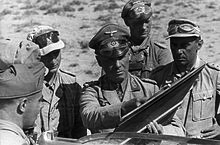 Australia, New Zealand, South Africa, and British India forces. Auchinleck is a village five miles south-east of Mauchline, and a couple of miles north-west of Cumnock in East Ayrshire, Scotland. Attorney Biographer James Boswell, Edinburgh 1740, was the son of Lord Auchinleck. Rommel in North Africa June 1942, commanded the Axis German and Italian army.
Australia, New Zealand, South Africa, and British India forces. Auchinleck is a village five miles south-east of Mauchline, and a couple of miles north-west of Cumnock in East Ayrshire, Scotland. Attorney Biographer James Boswell, Edinburgh 1740, was the son of Lord Auchinleck. Rommel in North Africa June 1942, commanded the Axis German and Italian army.
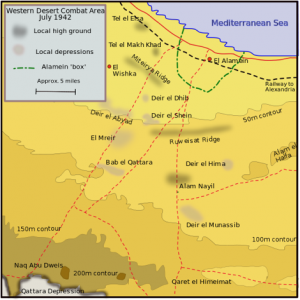 Western Desert Combat Area July 1942. Local High ground. Local depressions. El Alamein ‘box’. Approximately 5 miles. Mediterranean Sea. Tel el Eisa. Tel el Makh Khad. Miteirya Ridge. El Wishka. Deir el Abyad. El Mreir. Ruweisat Ridge. Railway to Alexandria. Alam el Haifa. Deir el Munassib.
Western Desert Combat Area July 1942. Local High ground. Local depressions. El Alamein ‘box’. Approximately 5 miles. Mediterranean Sea. Tel el Eisa. Tel el Makh Khad. Miteirya Ridge. El Wishka. Deir el Abyad. El Mreir. Ruweisat Ridge. Railway to Alexandria. Alam el Haifa. Deir el Munassib.
1987 The Visit of the Duke AND DUCHESS OF YORK to Scotland.
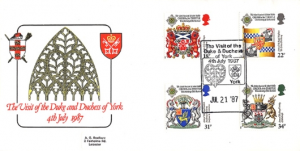 Sarah, Duchess of York (Sarah Margaret; née Ferguson; born 15 October 1959) is the former wife of Prince Andrew, Duke of York, the second son of Queen Elizabeth II and Prince Philip, Duke of Edinburgh.
Sarah, Duchess of York (Sarah Margaret; née Ferguson; born 15 October 1959) is the former wife of Prince Andrew, Duke of York, the second son of Queen Elizabeth II and Prince Philip, Duke of Edinburgh.
2016 Elder John and Sister Gretchen Choate visit the Missionary Training Center in Provo Utah for classes on Preach my Gospel, and military relations. John (Clans Cochrane, Gordon, Hunter, Meldrum, Stewart) Gretchen (clans Armstrong, Fraser, MacPherson), and others.
Disclaimer: The author of each article published on this web site owns his or her own words. The opinions, beliefs and viewpoints expressed by the various authors and forum participants on this site do not necessarily reflect the opinions, beliefs and viewpoints of Utah Standard News or official policies of the USN and may actually reflect positions that USN actively opposes. No claim in public domain or fair use. © John Choate
Utah Standard News depends on the support of readers like you.
Good Journalism requires time, expertise, passion and money. We know you appreciate the coverage here. Please help us to continue as an alternative news website by becoming a subscriber or making a donation. To learn more about our subscription options or make a donation, click here.
To Advertise on UtahStandardNews.com, please contact us at: ed@utahstandardnews.com.


Comments - No Responses to “July 4th Scots Book of Days”
Sure is empty down here...